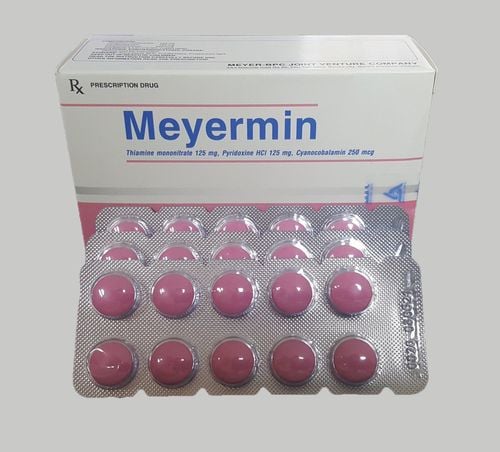This is an automatically translated article.
Article written by Doctor Nguyen Thai Ngoc Chau - Neonatal Pediatrics Department, Vinmec Phu Quoc International General Hospital
For some reason, the mother does not have milk to breastfeed or the mother has milk but cannot breastfeed. The doctor will suggest a few ways to do it right, as well as share about easy ways to make mistakes to help mothers raise their children more smoothly.
1. Reasons for mothers not having milk or babies not being able to breastfeed
Some children cannot use breast milk even though breast milk is the most suitable natural food for babies in the first stage of life:
Due to children: Babies born too prematurely need special nourishment, children with cleft lip cleft palate, children with congenital metabolic disorders Due to mother: mother has HIV infection, active tuberculosis, mother had chickenpox within 5 days before birth and 2 days after birth, need to be separated from baby, mother has chemotherapy, radiation therapy... Some other cases: Mother had to go to work early because of economic difficulties, mother left her child (early death after birth, divorce..), mother lost milk due to drug use, abscess bilateral breasts
2. Solutions when the mother does not have milk:
Wrong solution: Children who are fed with diluted porridge or stirred powder will not have enough substances necessary for development. In addition, children cannot digest starch before 6 months of age, as a result, children will lose weight quickly, stop growing in height, head circumference, and chest circumference. It eventually leads to:
Malnutrition if you feed your baby with thin porridge. Both types of malnutrition are accompanied by vitamin A deficiency, causing blindness in children if not treated promptly.
Some suitable alternatives:
Breastfeed another mother until 6 months of age, or use a breast milk bank. Currently, Vietnam has two breast milk banks in Da Nang and Ho Chi Minh City. Feed with milk from animals (cow, goat, buffalo..) depending on circumstances. Feed with soy milk.
3. How to make milk substitute when mom doesn't have milk
3.1. When using cow's milk Normally, canned infant milk has a measuring spoon. Each scoop is equivalent to 30ml of water. Some milk brands give large measuring spoons: 60ml of water/spoon. Depending on age, mix milk in accordance with the amount of milk each time and the number of times a day.
Principles of feeding infants with cow's milk substitute:
The first week of learning to eat from less to more, increase 10ml per day for each meal.
Example: Day 1: 10ml x 6-7 meals
Day 2: 20ml
Day 3: 30ml
Day 7: 70ml
Week 2: 80ml x 6-7 meals
Week 3: 90ml x 6-7 meals
Week 4: 100ml x 6-7 meals
From the 2nd to the 6th month, you can calculate the average amount of milk per day, equal to 15% of your weight. Monitor milk tolerance, children gain weight from 25-30 g/day, children may need 140-200ml/kg/day in the first 3 months. However, the rate of weight gain decreases from 3-12 months.
If the baby is born prematurely or is born weak, each time they do not eat much, the number of meals a day can be increased to 8-10 depending on the child's ability.
3.2. How to use other types of milk Goat's milk: Like fresh cow's milk, can be used for children after adding sugar 35g/liter and boiled to cool and drink. Buffalo milk: In some areas, this type of milk can be used. Buffalo milk is often thicker than fresh cow's milk, so when using it, it must be mixed with water, added sugar and boiled to cool to drink. How to make: 1 liter of buffalo milk + 3 liters of water + 200g of sugar. Soy milk: Easier to digest than fresh cow's milk, but lacking in fat. When using should add oil and sugar. How to make soy milk: soak 100g of soybeans for 3 hours, pound with 1 liter of water, mix well and filter the water through a thick cloth. Add 2 tablespoons oil + 2 tablespoons sugar. Bring to a boil over low heat to cool and drink.
4. Prevention of infection when feeding cow's milk:
The optimal condition is that the baby needs to have as many feeding bottles as possible for the convenience of cleaning. You should consult your doctor when choosing milk for your baby. The type of milk chosen should be suitable for each family's economic ability because it has to be breastfed for a long time. Avoid giving sweetened condensed milk to babies < 6 months old because they are prone to digestive disorders. Non-creamy milk powder should not be used for children under 2 years old, because it is high in protein and minerals that can cause severe dehydration in children. It is necessary to periodically monitor the baby's health at the Nutrition Centers/Medical Stations near the house so that the doctor can help the mother promptly adjust the number of feeding sessions and the quantity of each feeding to suit the needs of the child. After the baby is finished feeding, the bottle should be cleaned, mixed with a little excess milk, fed immediately after the milk is mixed, and the leftover milk should be discarded because it can cause infectious diarrhea. Raw cow's milk should not be given to babies under 3 months, because it is difficult to digest and easy to get infections. Breast milk is still the most suitable and complete source of nutrition for babies, so moms always try to make the most of every opportunity to breastfeed their babies!
Please dial HOTLINE for more information or register for an appointment HERE. Download MyVinmec app to make appointments faster and to manage your bookings easily.














